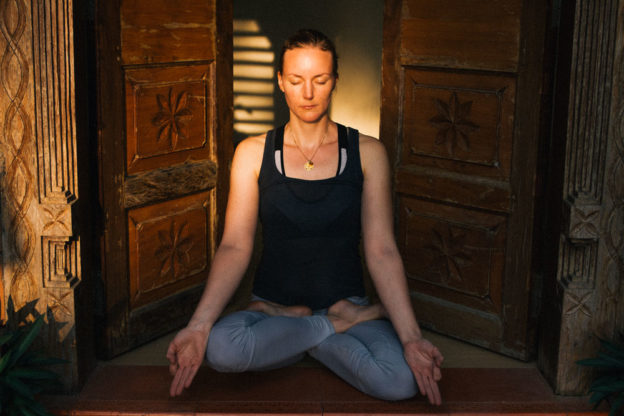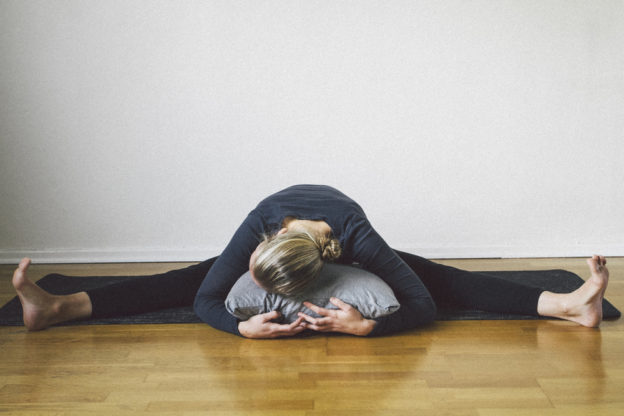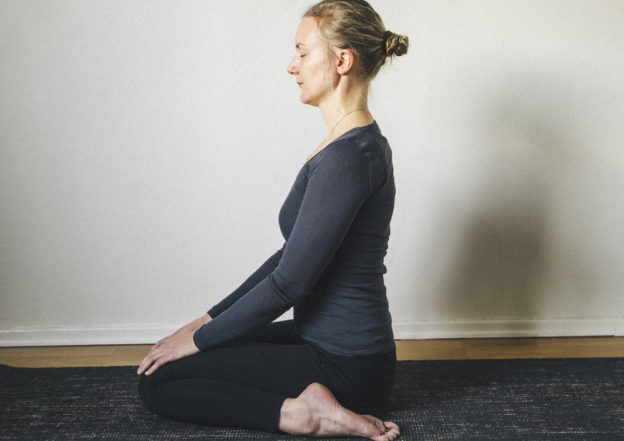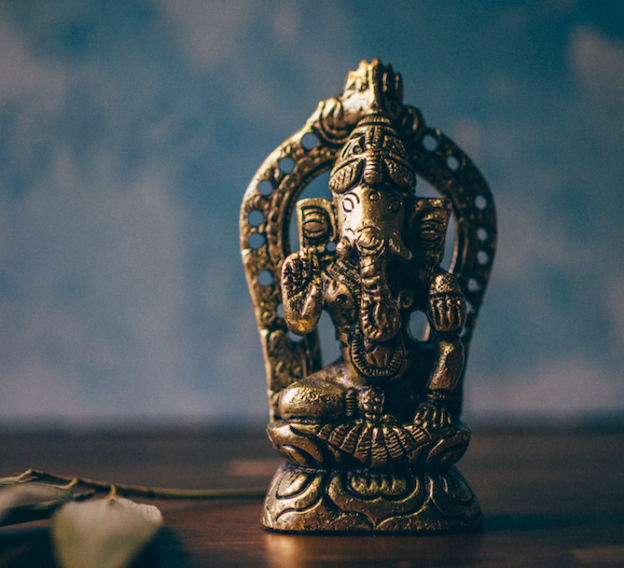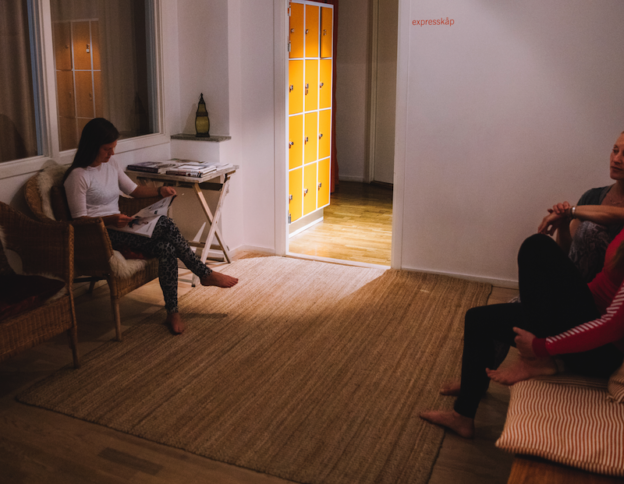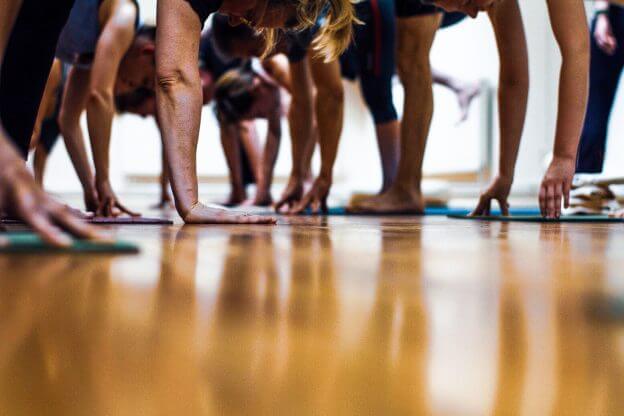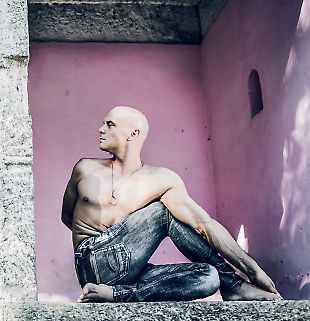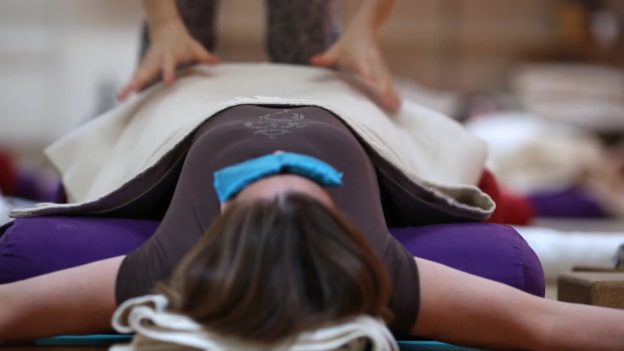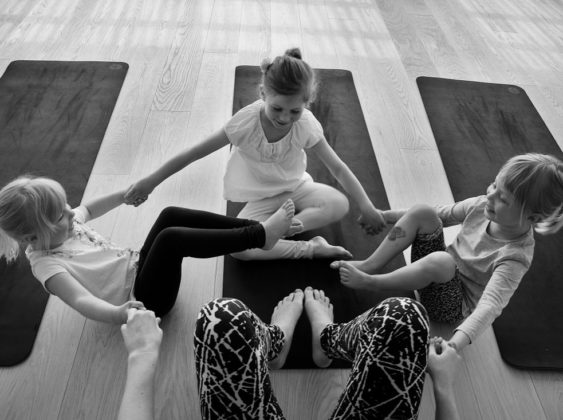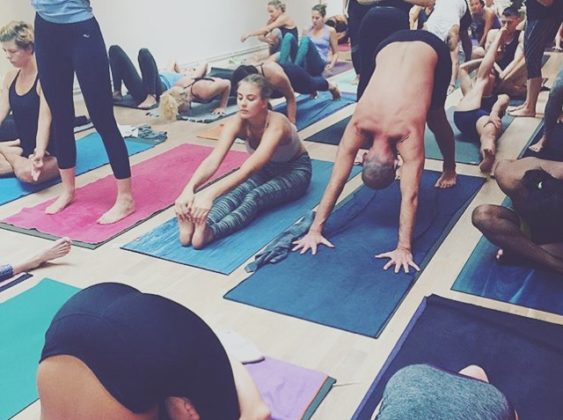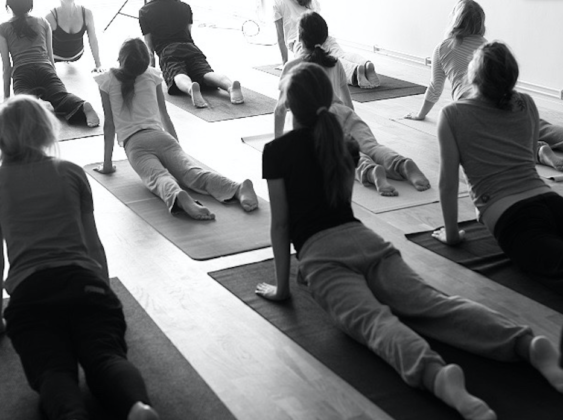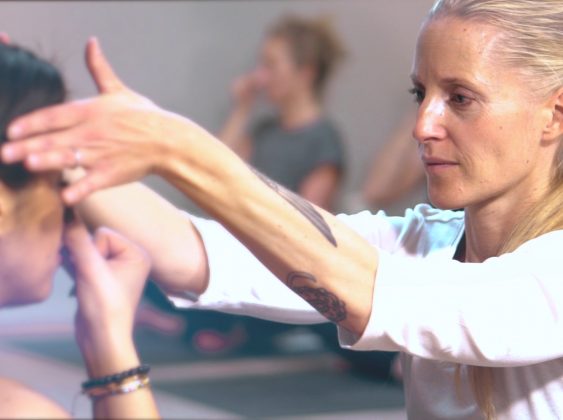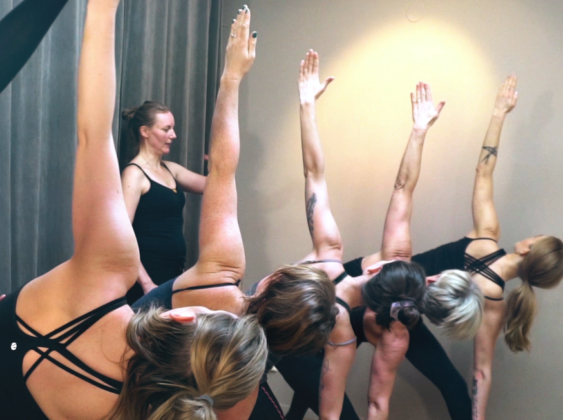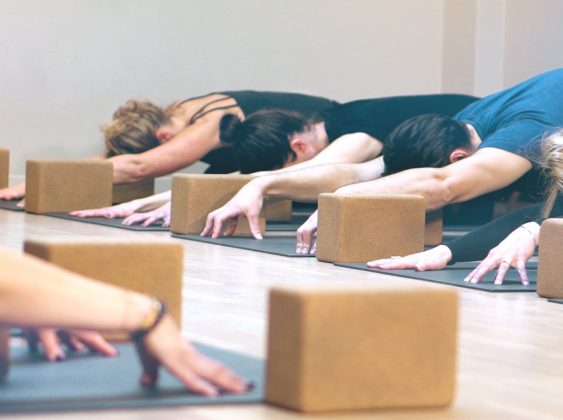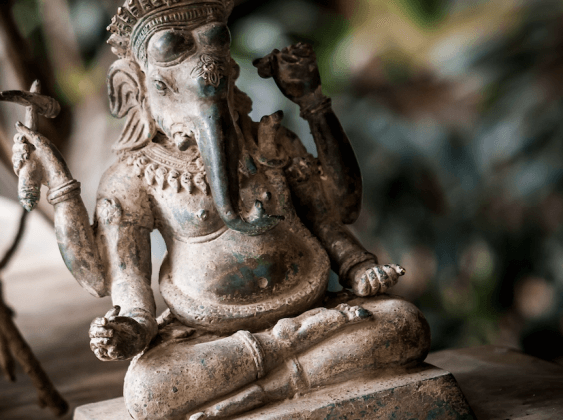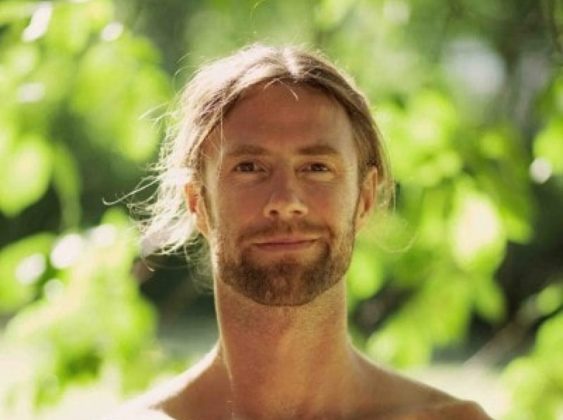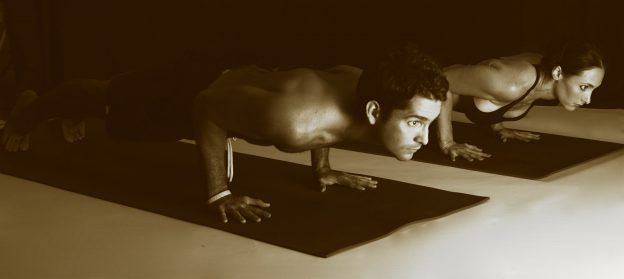
People practice yoga for many reasons. But, almost all who come to yoga have at least one thing in common: a desire to change something about their physical or mental experience.
Tapas is a Sanskrit term that literally means, “to purify with heat.” It’s used in The Yoga Sutras to describe one of the requisite elements in its system of practice: skillfully choosing to do difficult, beneficial work. And, although things might physically heat up when tapas is happening, physical heat is not the fire that tapas is about. The tapas of the sutras describes is metaphor for the mental heat generated by the friction of work that is difficult, beneficial, and chosen by the practitioner.
Tapas, as taught in the sutras, is about the difficult work required to shift your experience of reality to one that will work better for you. With tapas, existing points of view are deconstructed, then re-assembled with less baggage and more clarity.
Tapas in The Yoga Sutras
Tapas is so integral to the yoga of the sutras that it’s the first thing mentioned in the first sutra that begins the chapter about practice:
2.1: tapah svadhyaya ishvarapranidhana kriya yogah
Yoga practice requires willfully exposing oneself to the metaphorical element of fire within one’s practice, serious study, and aligning your actions with the true self.
Later in The Yoga Sutras, tapas is re-introduced. This time, it’s listed as part of niyama: five beneficial patterns of behavior and thought that organically begin to take root and grow as a result of the practice:
2.32: saucha santosha tapah svadhyaya ishvarapranidhana niyama
Cultivate purity of mind, an attitude of contentment, the difficult practice of beneficial change, study of the self, and alignment of actions with the true self.
Doing asana as the defining endeavor in an individual’s practice is a very new thing. Almost all popular styles of modern asana-centric practice can be traced back only about a hundred years.
But, being new doesn’t mean that practices based on asana are not the same yoga practice described in the sutras. They can be as authentic and effective as anything else described in the sutras. That is in part because, integral to the framework for practice that the Yoga Sutras provides is the viewpoint that all paths are unique and that what works for one person may not work for another.
What works for a lot of people right now is this physical thing we have been calling yoga. And although asana is reaching new heights in popularity among practitioners as a means to higher physical function, that quest for optimal fitness is nothing new. It’s laid out in the last sutra that mentions tapas:
2.43: kaya indriya siddhih ashuddhi kshayat tapasah
Willfully exposing oneself to the metaphorical element of fire within one’s practice brings complete attainment of bodily power and completely removes impurities therein.
That’s a good reason to give it a go, isn’t it?
Working with Tapas in Your Practice
Having established that doing hard physical and mental work occupies an important place in the practice of The Yoga Sutras, let’s look at how the modern practitioner, seeking to drive skilled and authentic practice of this old science in this new world.
The Yoga Sutras teach how to have a happier mind by holding focus on whichever thing, concept, or technique you choose.
One interpretation of the concept of tapas teaches an approach about how to work with the body as that chosen thing. Choosing the optimization of musculoskeletal function as focal point brings at least two big challenges with it:
Challenge 1. How do we do the practice of The Yoga Sutras, which is incontrovertibly a practice of the mind, and focus it on the body?
Challenge 2. How do we work with the body in a way that develops optimal physical functionality?
To best teach how to meet those challenges, consider applying a technique that we can call “The Tapas Point.” It’s a term used to describe how far to go into any pose that has a range of possible depths- like a forward bend.
Defined most simply, the Tapas Point is the stopping point for a movement that brings the body from an assigned and well-aligned starting point toward another shape, which is probably not possible. The Tapas Point is that point in that path where going further would mean misaligning something.
Here’s an example. If you are standing up on straight legs, and you lift one leg forward and up in from of you, there will be a point where lifting the leg further could only happen if the movement originated from somewhere other than that leg’s hip. Once that leg’s hip has lifted its leg as far as its strength and openness will allow, the only way to get the leg higher would be to bend a knee (requiring less flexibility in the hip) or lean back (requiring less strength to get the leg higher) or something like that.
This leg lifter who lifts the leg no matter what else happens in the body is not a bad person, but they aren’t working with the Tapas Point.
In that same scenario, if we took the same movement, but decided to lift the leg without moving anything else, then the Tapas Point is the highest point that you can lift the leg without moving something else- like bending a knee or leaning back.
It’s simple, but it’s wildly valuable. Here is how something as simple as knowing where to stop can fuel so much good work in yoga practice.
Tapas Point as Focal Point
You can’t work at the Tapas Point if you aren’t paying attention. It’s an impossibility. The Tapas Point can only be reached with the active mental participation of the practitioner. So, although this stopping point is determined by physical ability, working this way takes asana from being a purely musculoskeletal endeavor to a mental practice that yields deeply beneficial mental results. And the thing that makes a physical practice an actual practice of yoga is the fact that the practitioner is paying attention. So, working at the tapas point is beneficial in this way that it requires focus.
Tapas Point as Stopping Point
Beneficial change happens at the Tapas Point because stopping and working there addresses whatever limitation is preventing deeper movement, if that limitation is one that needs addressing.
Limitations in asana can be broken down into three types: those that are about flexibility, those that are about strength, and those that are about skill and knowledge. In almost any pose, any or all of those can limit further movement. Knowing which thing is limiting movement is possible and interesting, but when you work at the Tapas Point, you really don’t need to figure it out.
Tapas Point as Access Point
Working with the Tapas Point gives everybody an all access pass to yoga because it allows anybody who has some control over their body can do it, regardless of their strength, flexibility or skill level. To do it, one simply starts where they are, then they add as much challenge as they manage well. And that’s it. Anybody can do that. Skilled, productive work with Tapas Point has nothing at all to do with which shapes the practitioner can put their body into.
Tapas Point as Provider of Points to Ponder
When working at the Tapas Point, everybody, no matter what their unique circumstances, abilities, and challenges are, is provided with tremendously valuable information about how we each uniquely process and react to a direct experience of your own limitation.
Skill level working with Tapas Point is about finding the shape for you in that moment, whatever it is- and working there, and observing any mental chatter that comes up. If you listen intently to your mental processes in those moments, you can then try to discern which patterns serve your path and which do not.
The alternative, ignoring your body’s ability and positioning it based on your wants and fears, instead of basing it on what it can actually do, is a self-supporting mechanism of the ego-construct. Working at the Tapas Point gets you out of that trap.
Eventually you stop noticing how far you go physically. Your focus, instead of a desired shape, is on finding the endpoint of safe ability in that asana. The work itself gets the focus- not the shape.
As clay is the raw material of pottery, and a pantry provides the raw material of cuisine, working with tapas demonstrates an understanding that the body is the raw material for liberation from its own confines. The shapes that the body goes into … they are not the practice. The shapes are void of meaning. They’re empty boxes waiting to be filled with you.
Without you, they’re nothing. But, when you do them- they come alive with potential. Pay attention. Practice the tapas of The Yoga Sutras. Find the end reach of your ability. Then stare directly into the face of that moment and fearlessly listen to how you treat yourself. Then get up, dust off the ashes, go about your day, and do it again tomorrow.
blogs
Our present state of mind
Our mat is our universe and our supportive energy. Our practice on it reflects how we act…
To be a beginner…
Thank you for taking the time to read and hopefully better understand your body, yourself and others.…
Happy Holiday part 1
In the Indian and yogic tradition you are suppose to rest when you have your menstruation. Why?…

Receipes
Några enkla kostråd för att hålla vata i balans under hösten
Ät och och drick varmt. Naturligt söta, sura och salta smaker är bra. Undvik råa grönsaker, knäckebröd…
Sött och gott
Raw cheesecake med hallon och granatäpple Botten: 1 dl valnötter, blötlagda 5 dadlar, urkärnade och blötlagda 1…
Yogayama’s bröd
En stor limpa: 3 dl grovt ekologiskt och biodynamiskt dinkelmjöl 1 dl havregryn, ekologiska 1 dl russin,…

Latest Videos
Carina Schütt
Carina har en bakgrund bestående av akademiska studier inom beteendevetenskap. Sedan hennes första möte med yoga ägde…

Workshops, Courses & Events
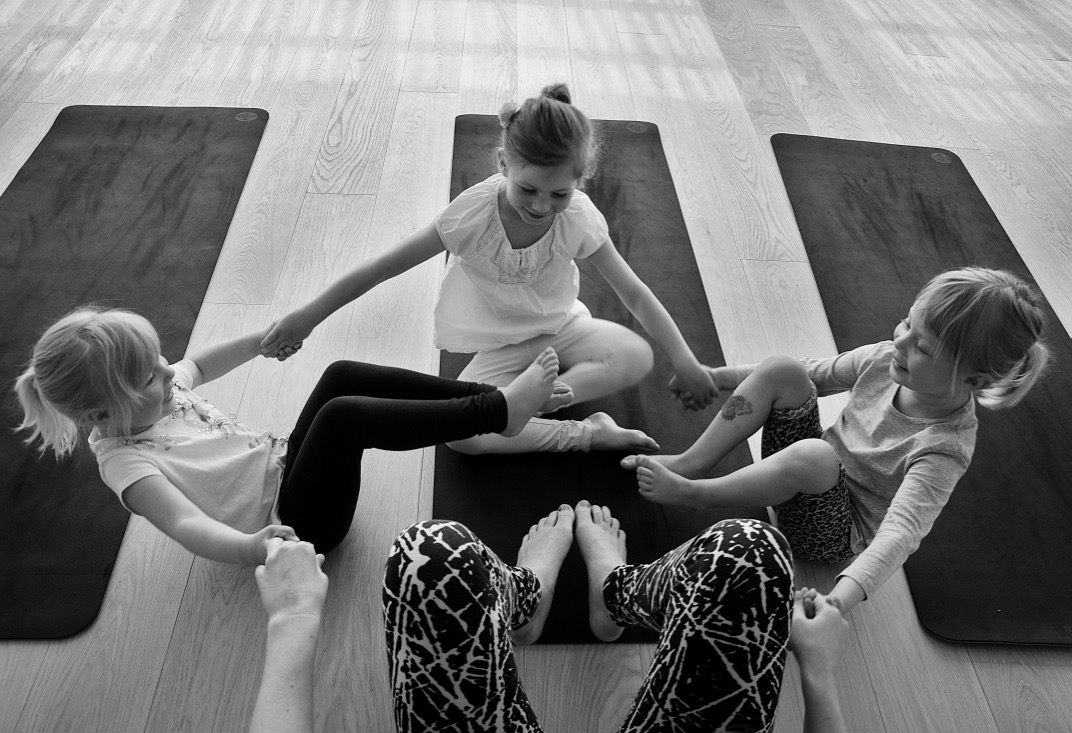


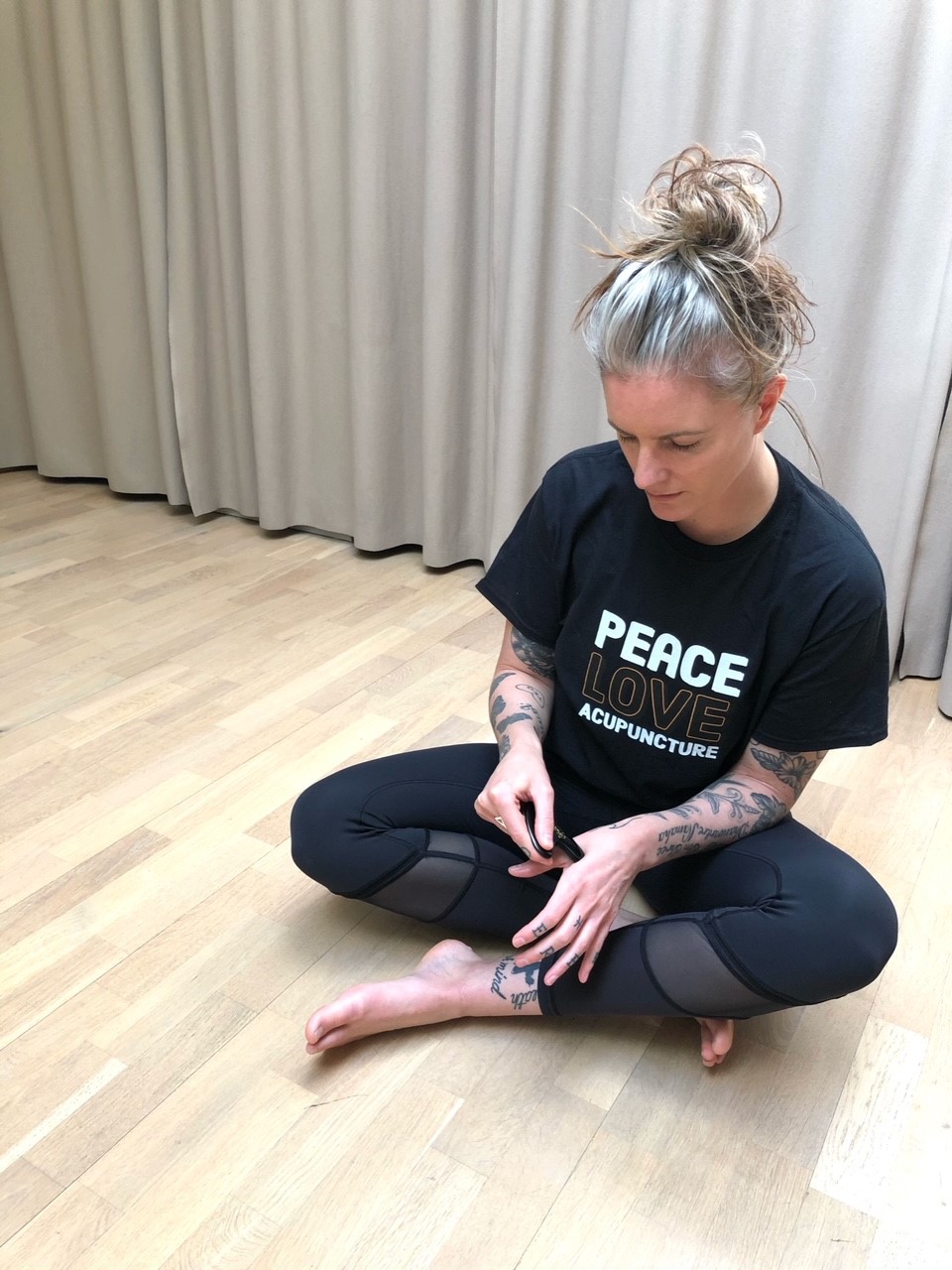
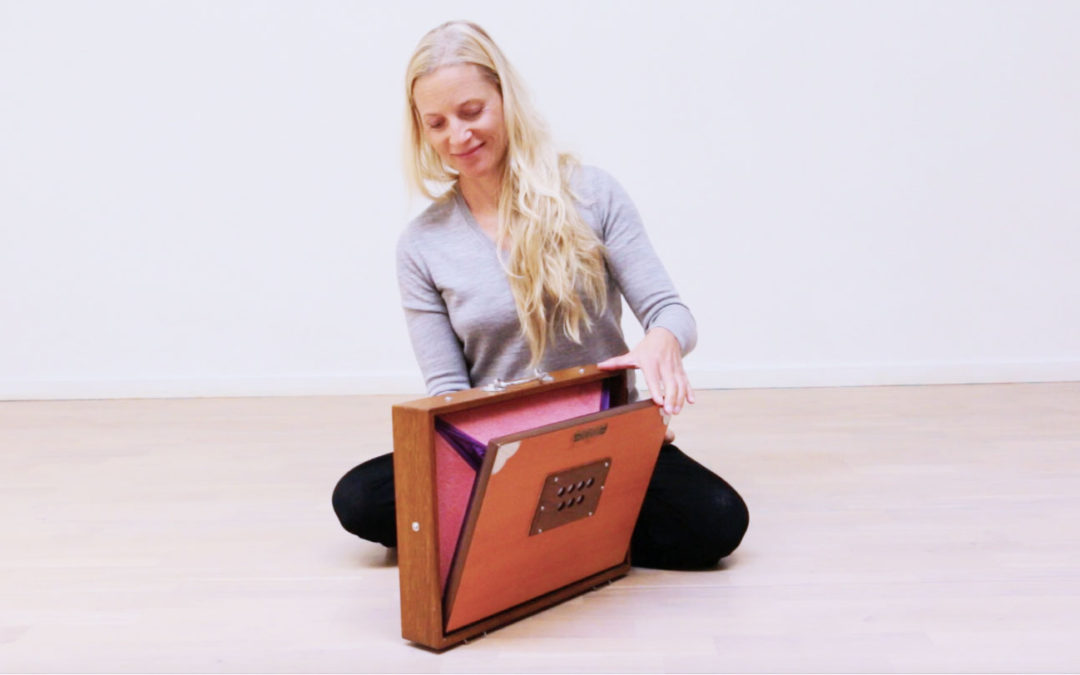
No Events Scheduled! .
No Events Scheduled! .
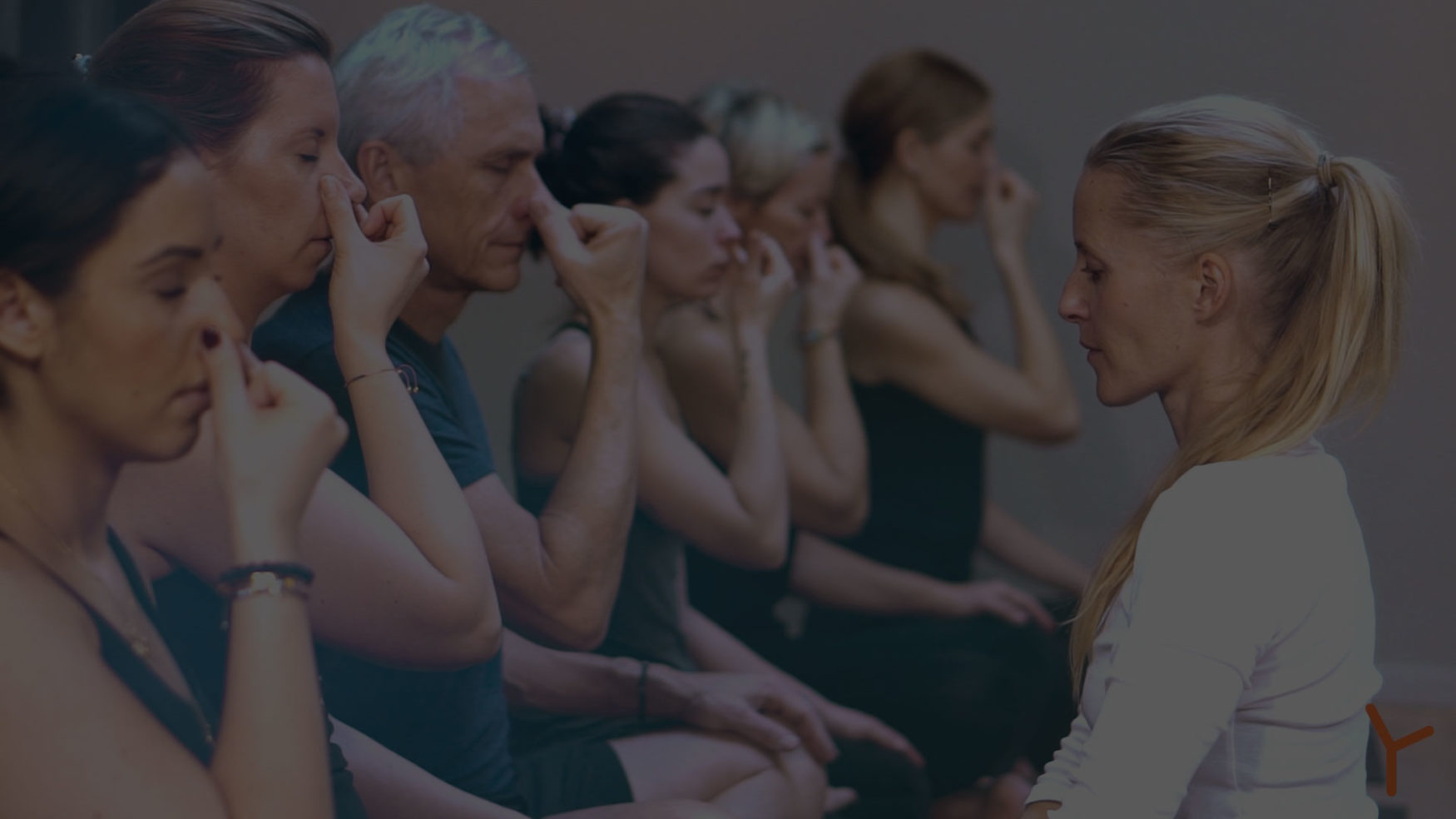
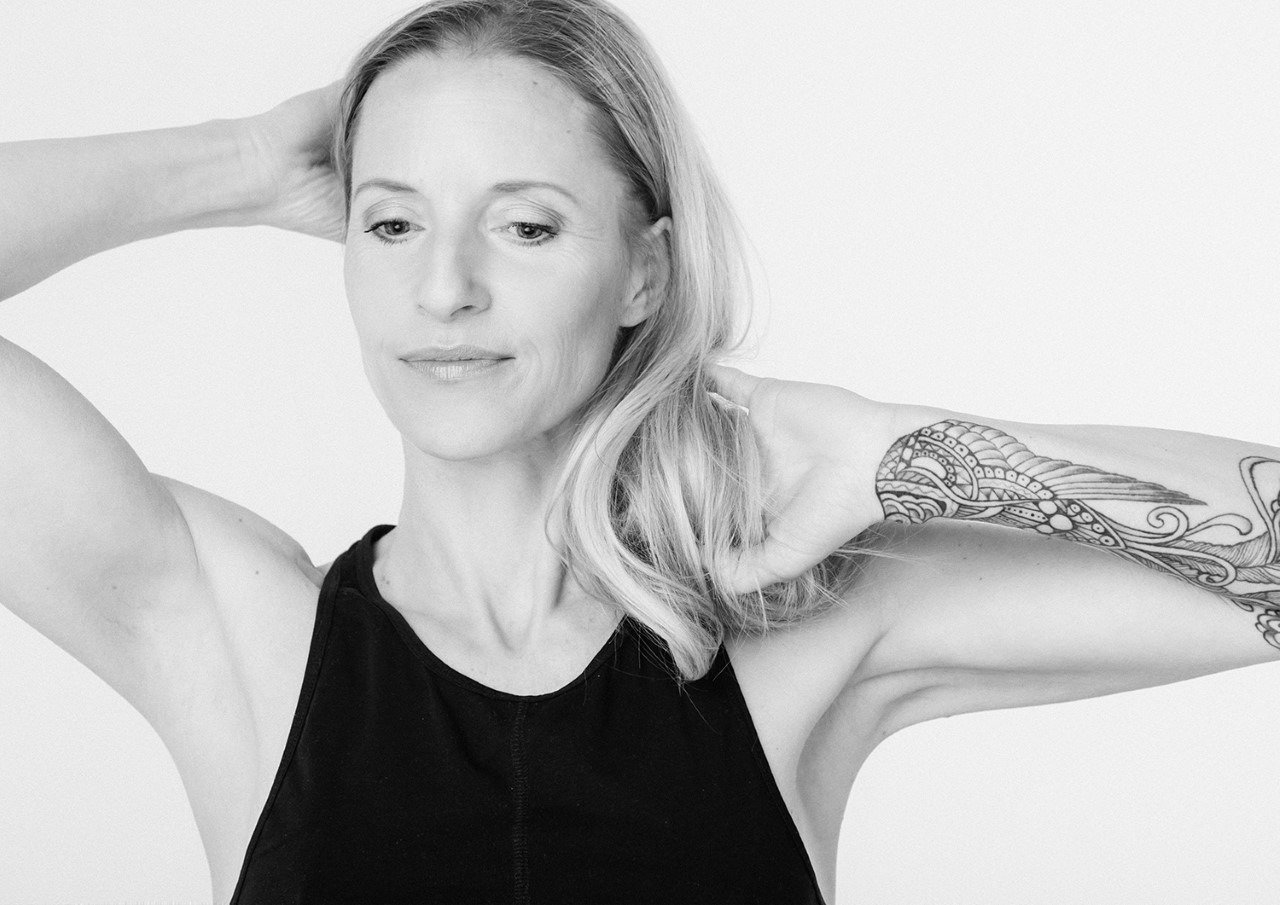
No Events Scheduled! .

No Events Scheduled! .



